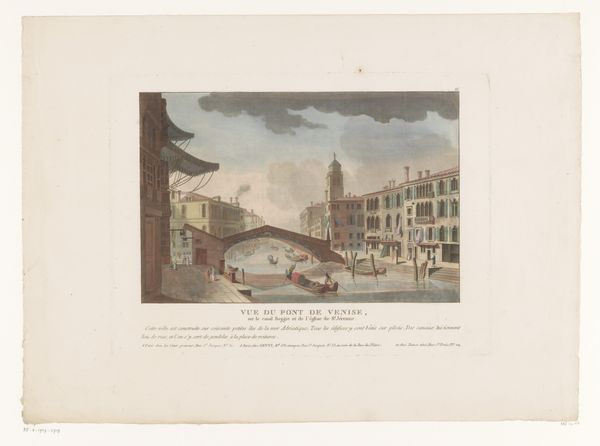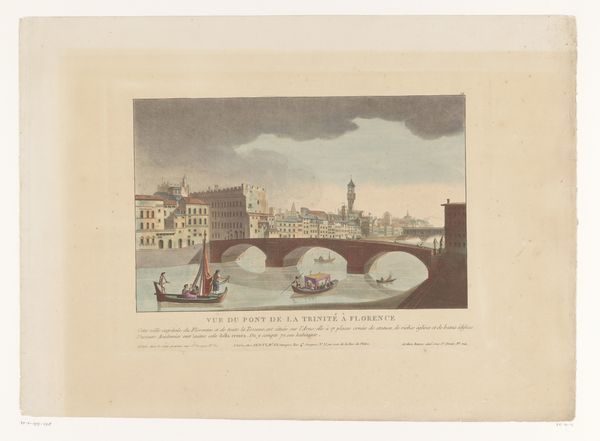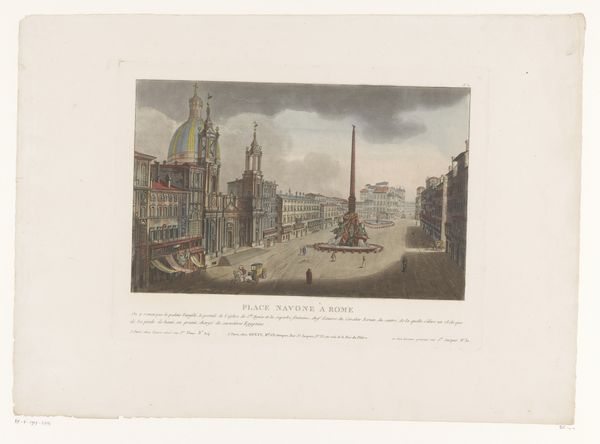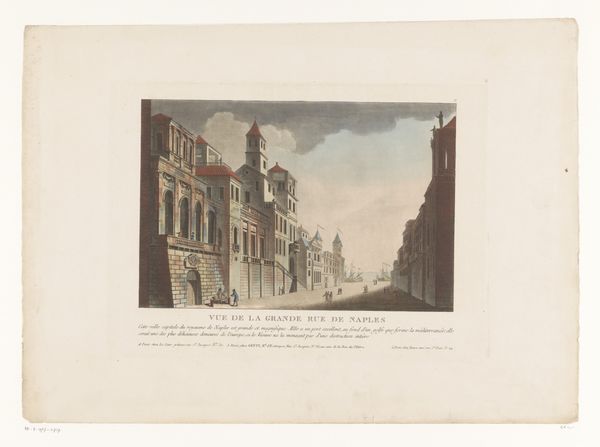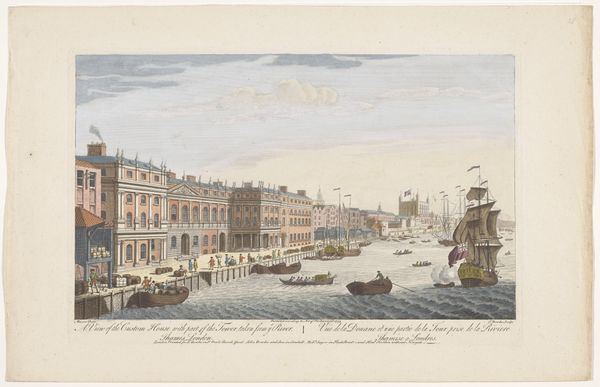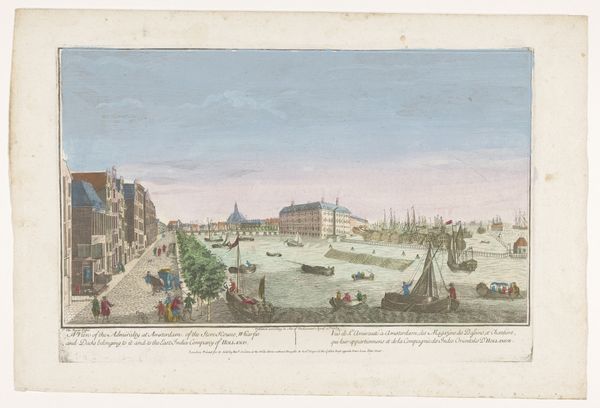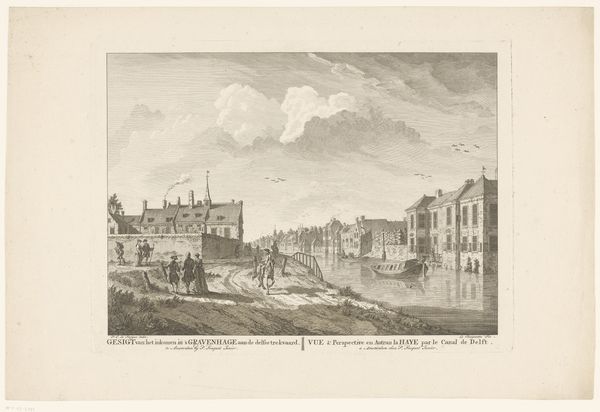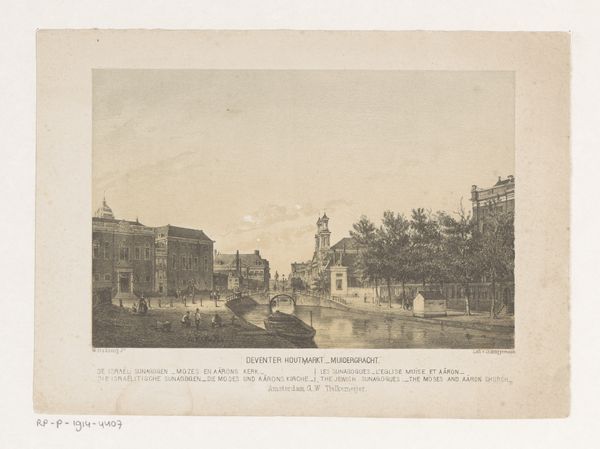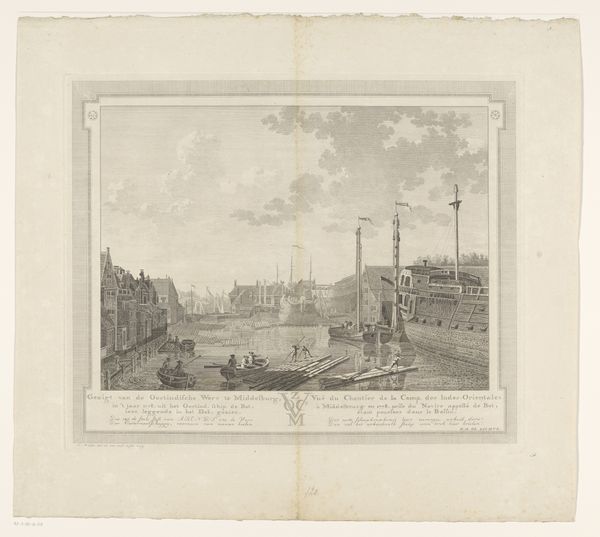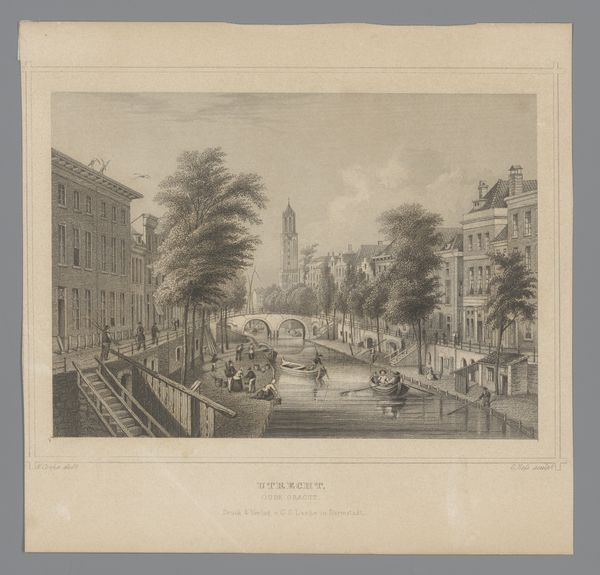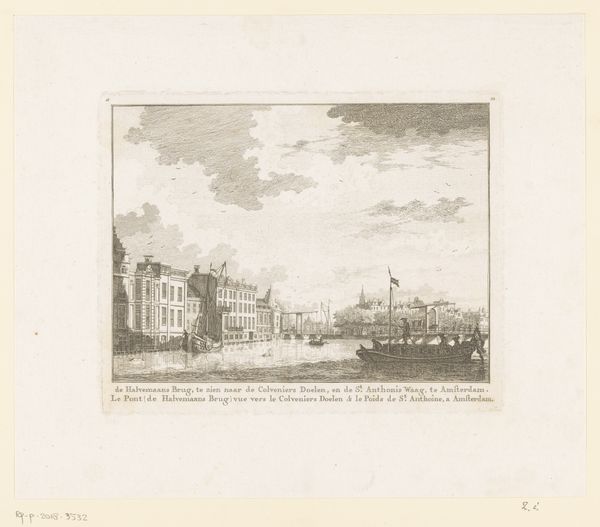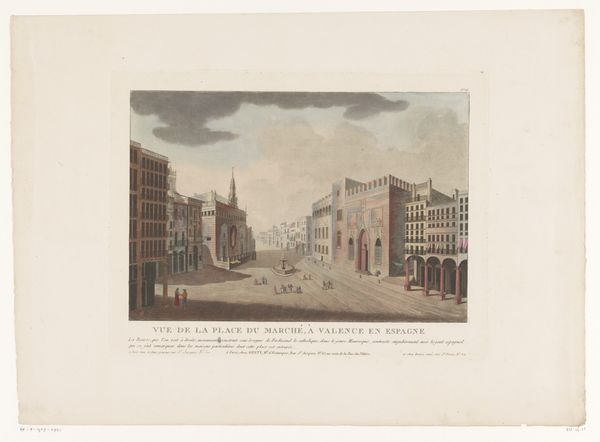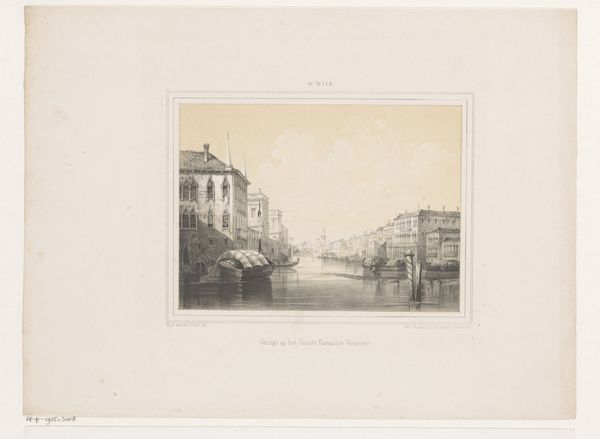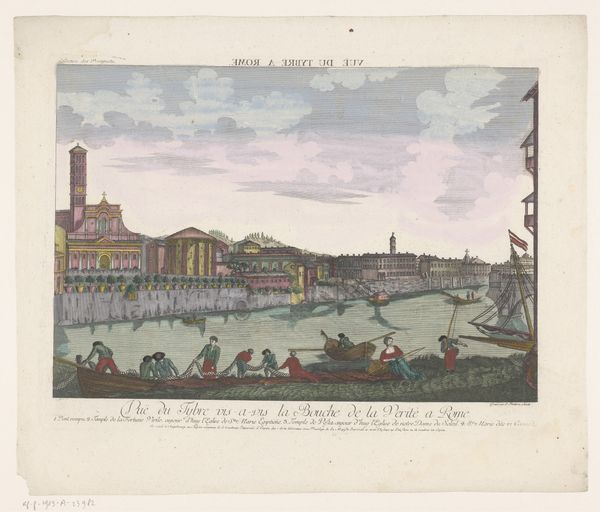
print, watercolor
#
neoclacissism
# print
#
landscape
#
watercolor
#
coloured pencil
#
orientalism
#
cityscape
#
watercolor
Dimensions: height 294 mm, width 387 mm
Copyright: Rijks Museum: Open Domain
Curator: Lecoeur's "View of a Square in Cairo," dating from 1812 to 1814, offers a glimpse into early 19th-century Egypt. Rendered in watercolor, the work exemplifies a certain Neoclassical interpretation of Orientalism. Editor: My first impression is one of striking horizontal symmetry. The rigid architecture bordering the expansive public space projects a powerful sense of order and control. I’m immediately drawn to that flatness and rigid perspectival technique. Curator: Precisely. The architectural rendering adheres to precise, linear perspective, indicative of Neoclassical principles. The washes of watercolor are controlled, almost clinical in their application, focusing on structure and form rather than emotion or expression. Consider the way the geometric forms divide the space. Editor: But doesn’t the use of watercolor temper the strict architectural formalism? It softens the hard lines and lends a slightly romantic, almost nostalgic quality. Think of the conditions of this work's making – what dyes and pencils were available, and under what circumstances this image would be created, seen, and potentially used. This affects its style as much as its commitment to Neoclassical tenets. Curator: Perhaps, but the strategic color palette serves to accentuate the clear distinction of space. The warm tones of the buildings contrast with the cooler greens of the plaza. It reinforces a sense of classical order, emphasizing structure. The gaze is led towards the distant vanishing point with this strong linear quality. Editor: Still, the materiality—the evident layering of the watercolor—offers hints about the manual labour involved in its production, as well as Lecoeur's access to this location. The artist is engaging in visual reportage, an artistic approach as opposed to pure artistic creation. And the perspective flattens this labor in some ways. It reveals a tension between the exotic appeal of this far away place, and the artistic method of understanding it. Curator: You've identified a key point about the piece, the exotic encounter shaped through artistic processes and vision, which translates to legible forms in the piece. The use of perspective creates its effect. Editor: Yes, and it seems this piece opens a window into a period of exploration through which many works traveled back into Europe and into museums such as this. Curator: It’s a compelling synthesis. It offers insights into how artistic traditions frame unfamiliar geographies. Editor: Ultimately, an artwork deeply enmeshed in production, skill, labor, context and perspective.
Comments
No comments
Be the first to comment and join the conversation on the ultimate creative platform.
